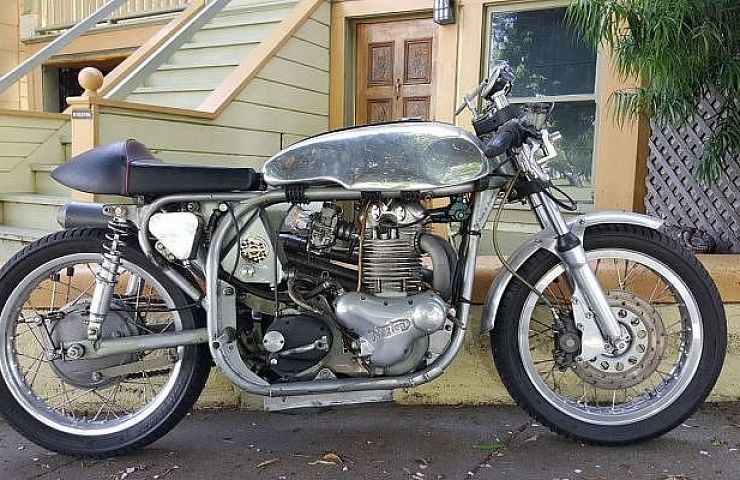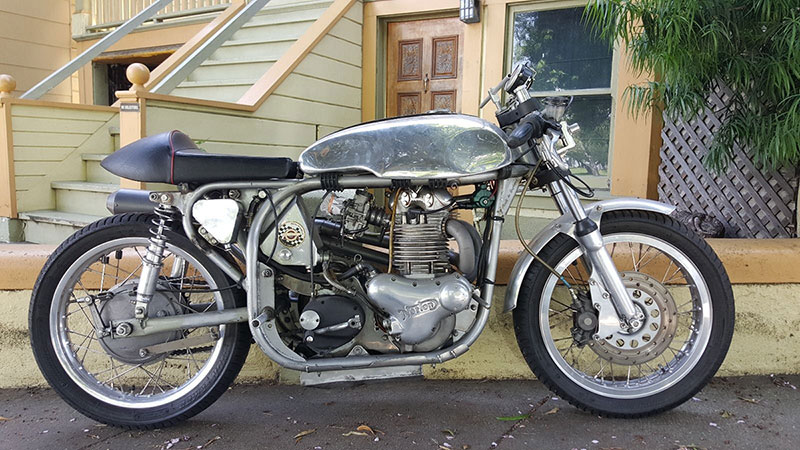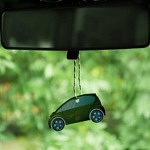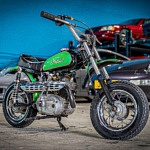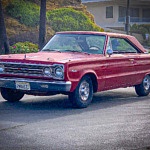While Norton never produced the same volume of motorcycles as its arch nemeses—BSA and Triumph—the manufacturer was known for superior handling and powerful engines. The Featherbed Frame utilized on the Atlas model was world renowned. Modified versions remain popular in British European American Racing Series competition.
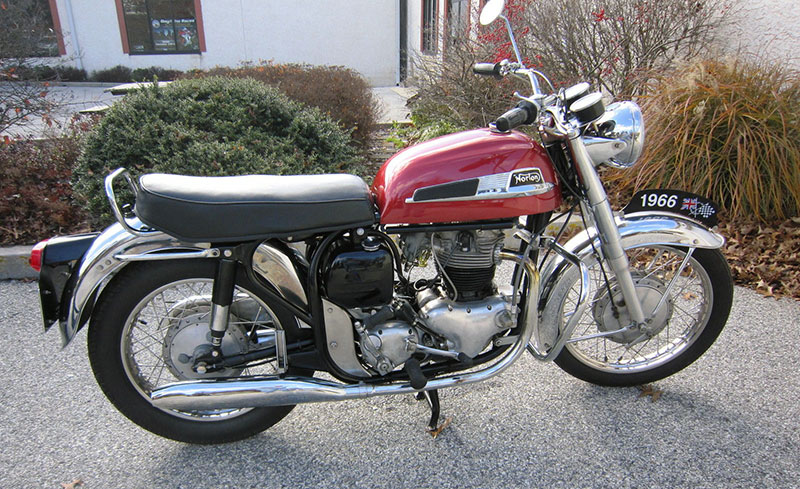
A 1966 Norton Atlas now listed on eBay.
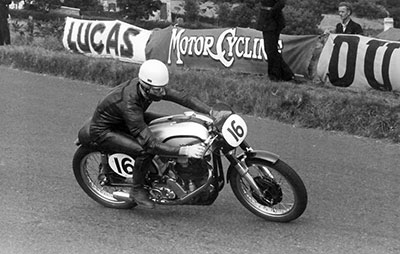
Photo of John Hartle on the Norton Manx in the 1956 Ulster Grand Prix.
Norton’s history of winning competitions with the Featherbed dates back to 1949, when a Manx won the Isle of Man TT. Such was its reputation that other companies including Triumph utilized it in hybrid models such as the Triton: a best-of-both worlds café racer that combined the Featherbed with Triumph’s parallel-twin engine.
“This particular Atlas racer combines the best of period twin-cylinder components with the best modern aftermarket parts designed to make Nortons go fast,” said Lindsay Brooke, a British motorcycle historian.
The 1964 racing Atlas bears little resemblance to its street legal counterpart. There are is no headlamp or tail lamp and no speedometer, only a tach. Engine components come from Steve Maney racing, while adjustable fork internals come from Cosentino. Les Cook of Cook’s Norton Service built the Atlas as his personal race bike and a means of promoting his business.
Steve Maney, a Yorkshire, UK-based motorcycle racer and engineer specializes in Norton performance, focusing on the Commandos but enveloping other models. Maney, who began racing Nortons in hill climbs during the 1970s, started the business with his dad, a former railroad engineer. The company became known for its robust components, with about 70 percent of its business devoted to racing and 30 percent on modified road bikes. While Maney no longer builds bikes, he continues to produce and sell components.
Maney components on the Atlas including cylinder heads, crankshaft, camshaft, valves belt drive, and exhaust raise the bike’s horsepower to 70, with 55 pound-feet of torque.
Norton produced the Atlas between 1962 and 1968. In an effort to appeal to American buyers, Norton bored out Bert Hopwood’s Dominator engine to 745 cc and mounted a single Amal carburetor atop to deliver 55-horsepower. The suspension consisted of dual forks up front and five-way adjustable shocks in the rear.
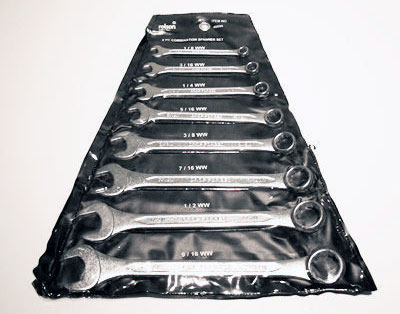
Eight-piece Whitworth combination wrench set Triumph BSA Norton
The bike’s upright handlebars, small fuel tank, and 18-inch rear wheel were also nods to American tastes. Two years later Norton added a second carburetor and upgraded the Lucas electrical system to 12-volts.
The appeal and challenge of vintage British bikes is involvement: they are fickle and require Whitworth tools that conform to neither standard nor metric measurements. This type of quirkiness explains the tightknit nature of the British bike community—an elite group whose members are both passionate and tenacious.
Certainly, owning and riding this retro café racer requires the know-how to maintain. But its value is unquestionable: components alone are worth more than the asking price. And it’s hard not to fall in love with the throaty roar of a Norton, one of the coolest and best handling bikes of its generation.

